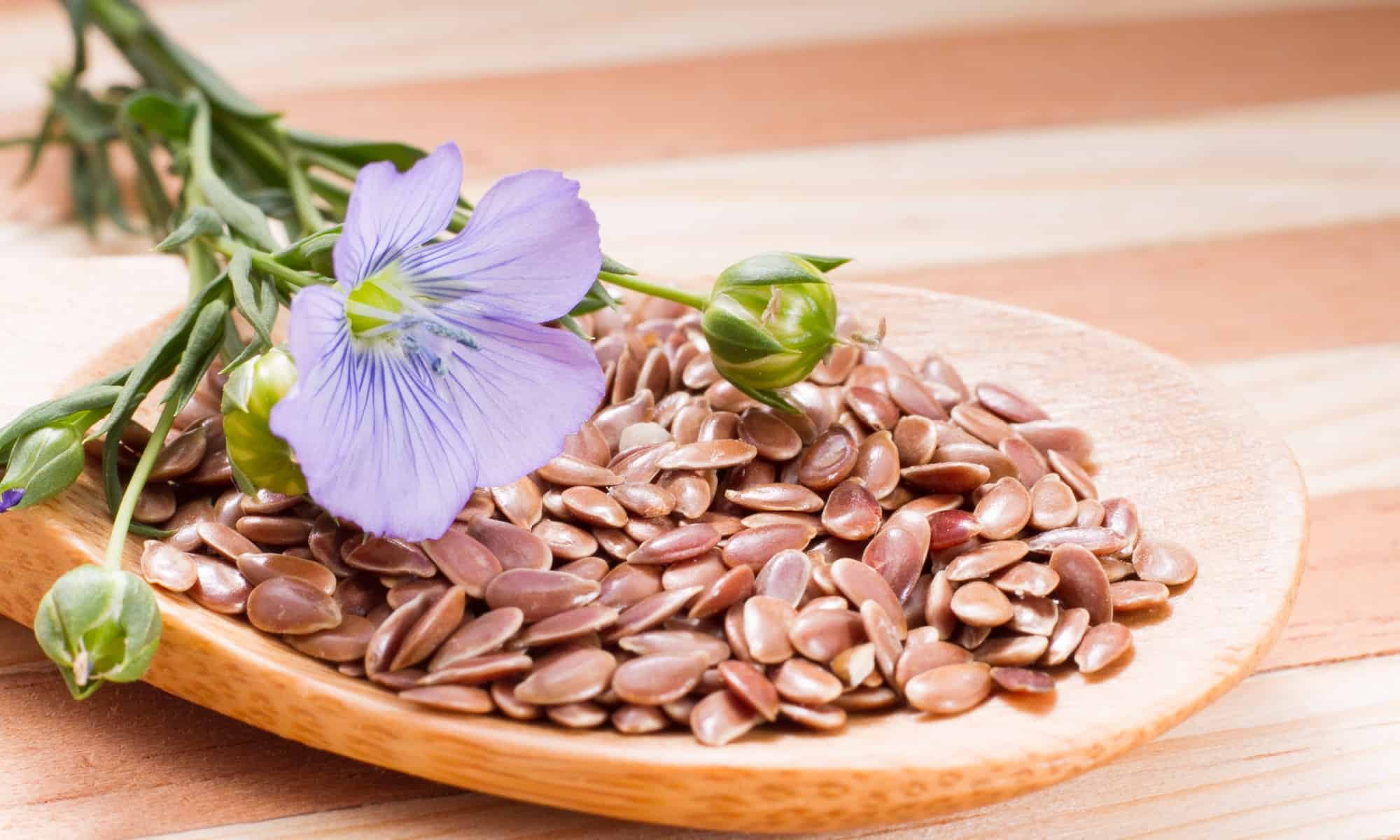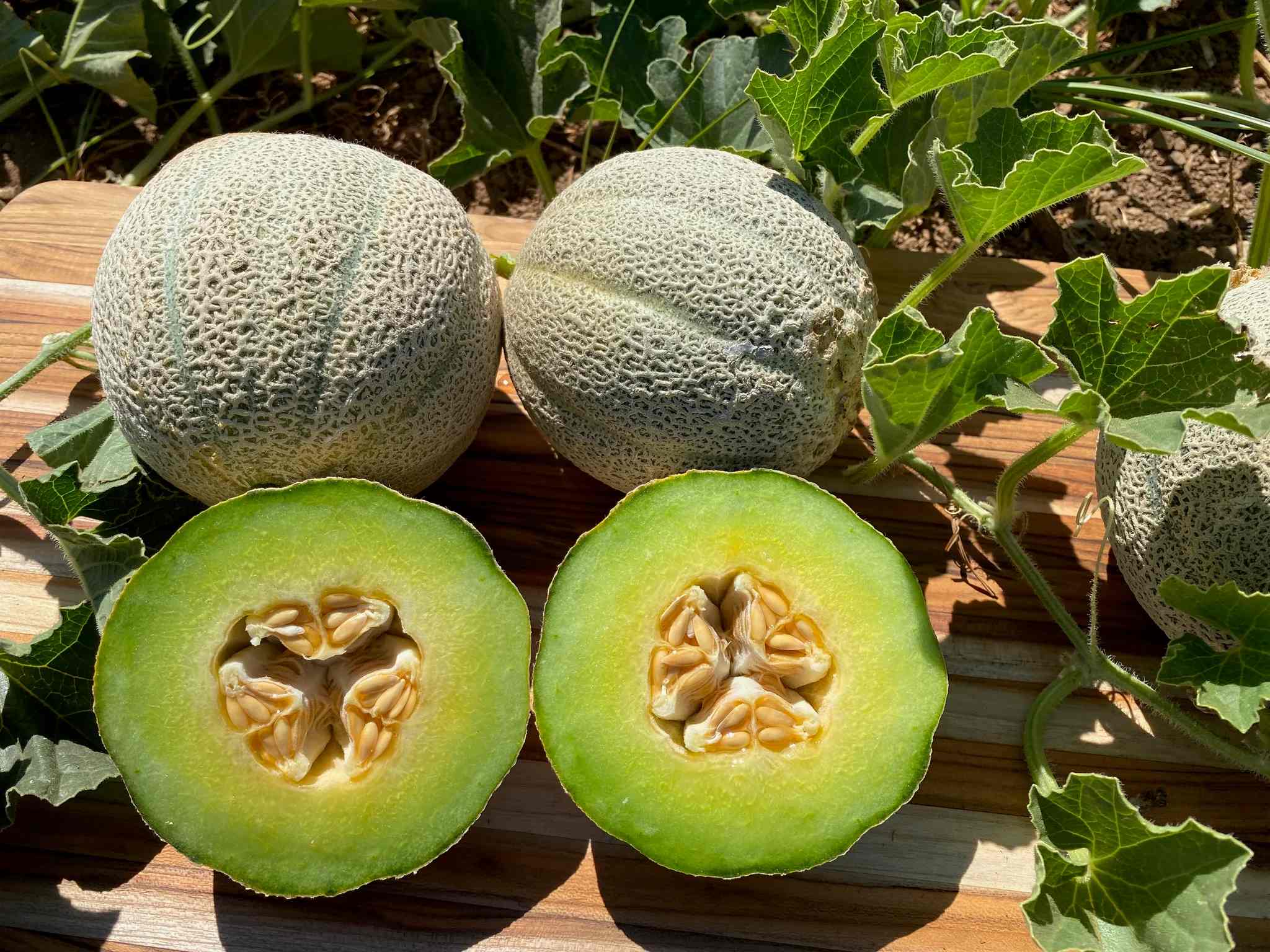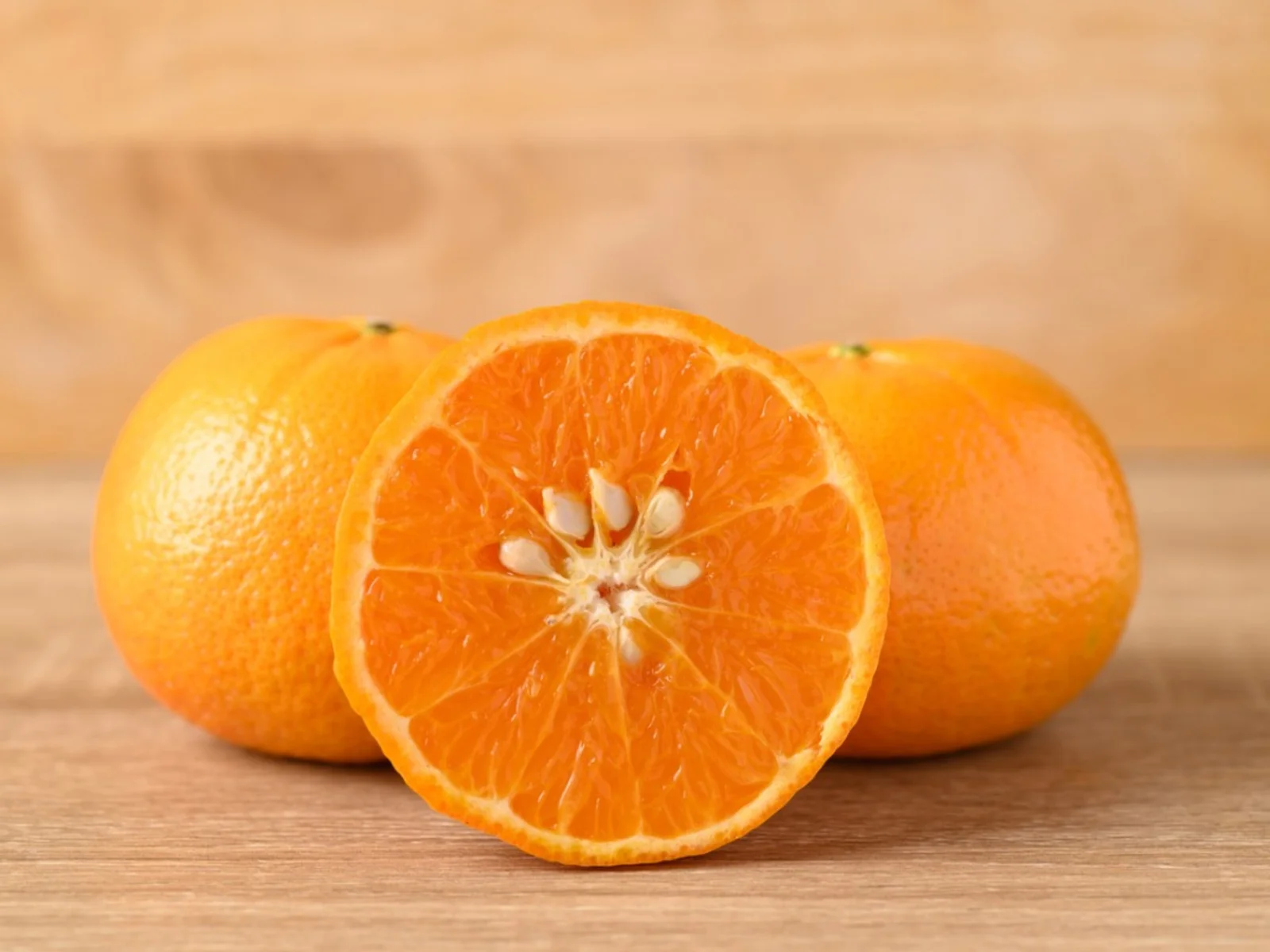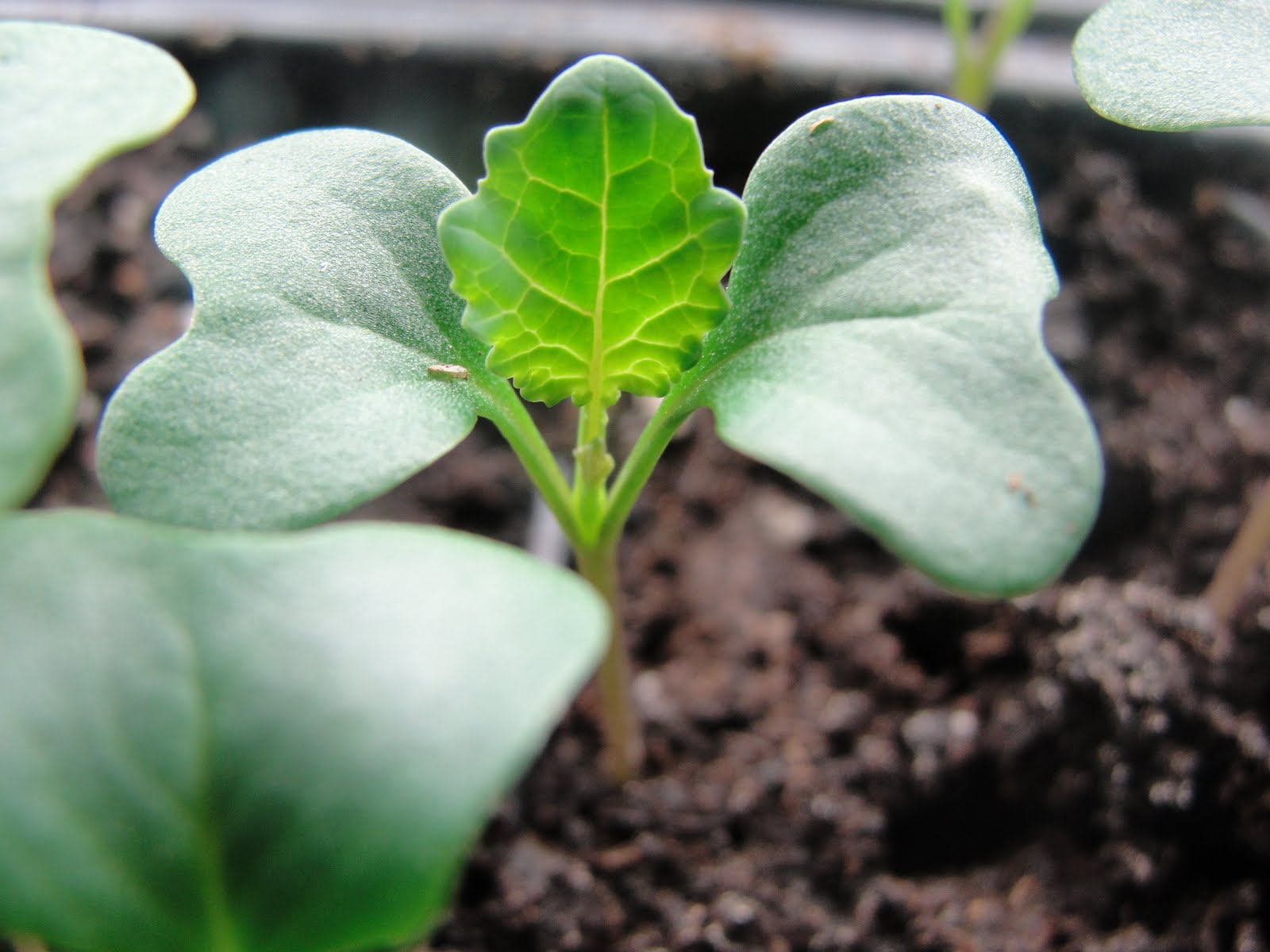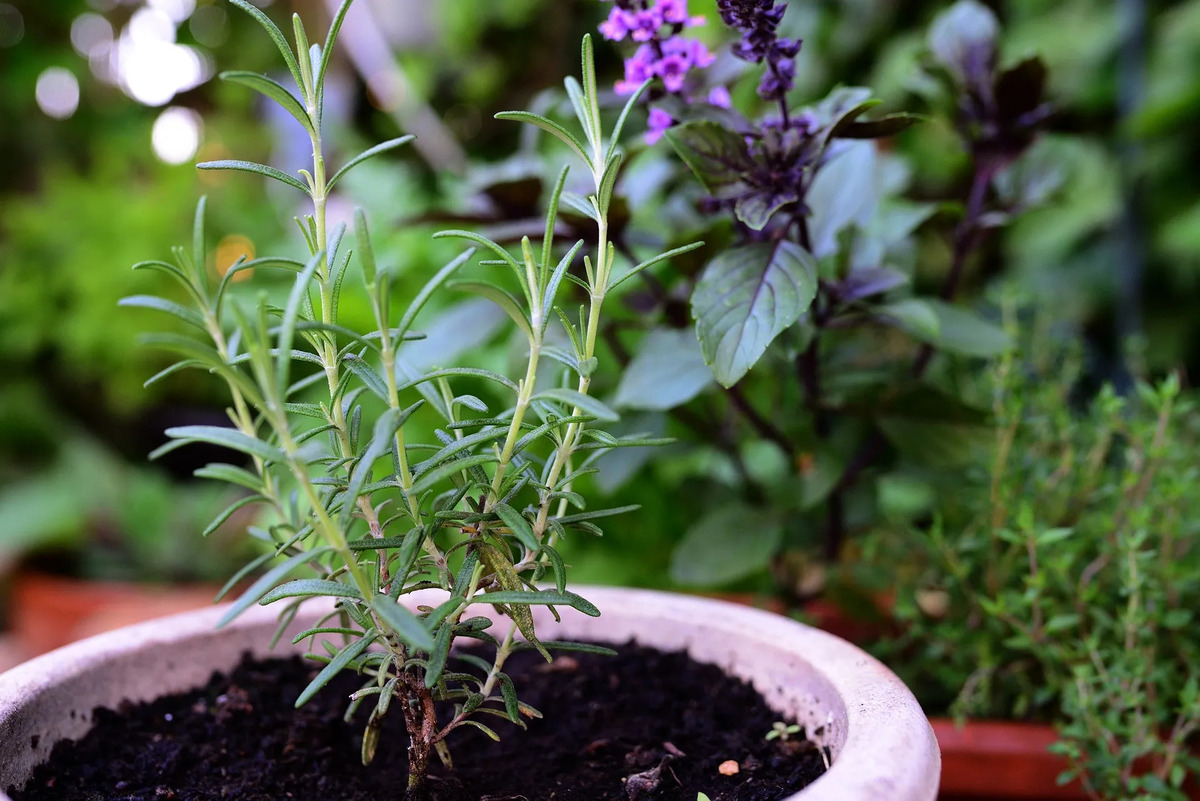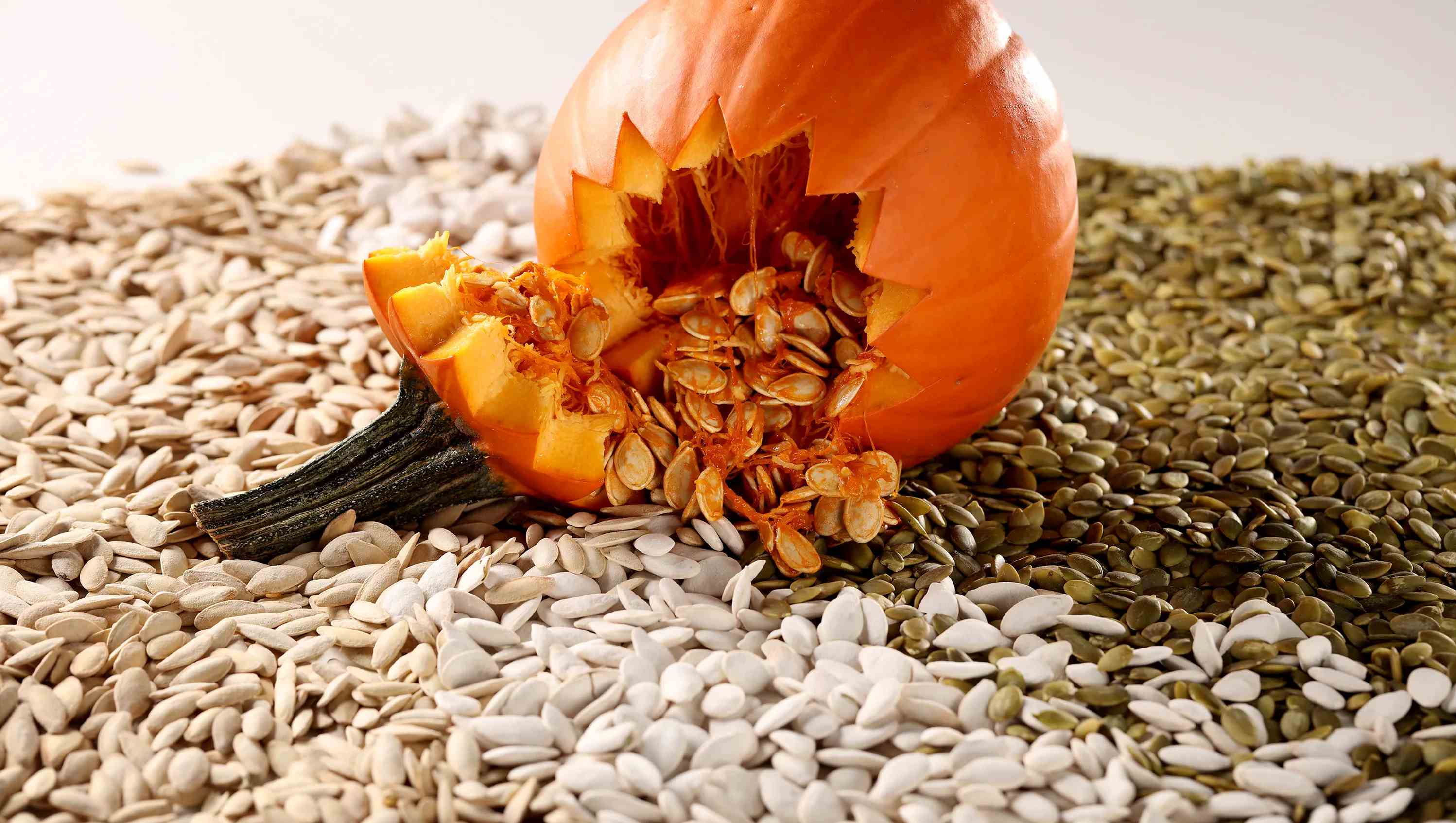Home>Types of Gardening>Edible Gardening>How Do Sesame Seeds Grow


Edible Gardening
How Do Sesame Seeds Grow
Modified: February 7, 2024
Learn about edible gardening and discover how sesame seeds grow, from planting to harvesting. Get expert tips and tricks for growing this nutritious and versatile crop in your own garden.
(Many of the links in this article redirect to a specific reviewed product. Your purchase of these products through affiliate links helps to generate commission for Chicagolandgardening.com, at no extra cost. Learn more)
Table of Contents
Introduction
Edible gardening is a rewarding and environmentally friendly way to add fresh and nutritious produce to your plate. One popular crop that many gardeners enjoy cultivating is sesame seeds. Known for their unique flavor and nutritional value, sesame seeds have a long history dating back thousands of years. In this article, we will explore the fascinating process of growing sesame seeds, from planting to harvesting to processing.
Sesame seeds, scientifically known as Sesamum indicum, are small seeds that are widely used in cooking and baking around the world. They are packed with essential nutrients such as protein, fiber, healthy fats, vitamins, and minerals. Sesame seeds are also known for their high content of antioxidants, which can protect the body against oxidative stress and promote overall well-being.
To grow healthy sesame plants, it is essential to understand the specific growing conditions they require. Sesame seeds thrive in warm climates and need full sun exposure to grow successfully. They prefer well-draining soil with a pH level between 5.5 and 6.5. Additionally, sesame plants have a relatively short growing season, making them an ideal choice for gardeners with a limited time frame.
In the next sections, we will delve into the step-by-step process of planting sesame seeds and caring for the plants throughout their growth cycle. We will also explore the crucial steps involved in harvesting sesame seeds and the subsequent processing methods to prepare them for culinary use.
Finally, we will highlight the versatility of sesame seeds in the kitchen and discuss their numerous health benefits. From adding a crunchy topping to salads and stir-fries to using them in baking and making homemade tahini, sesame seeds can elevate the flavor and nutritional profile of various dishes.
So, if you’re ready to embark on a journey into the world of edible gardening and learn how to grow, harvest, and enjoy the delights of sesame seeds, let’s dive in!
What are Sesame Seeds?
Sesame seeds are tiny, oval-shaped seeds derived from the Sesamum indicum plant. They have been used for thousands of years in various culinary traditions and are widely appreciated for their distinct flavor and nutritional value.
These seeds come in different colors, including white, yellow, brown, and black, with each variety possessing its own unique characteristics. Regardless of their color, sesame seeds offer a rich nutty taste that intensifies when toasted.
These small but mighty seeds are nutritional powerhouses. They are an excellent source of plant-based protein, making them a valuable addition to vegetarian and vegan diets. Sesame seeds are also high in healthy fats, including polyunsaturated and monounsaturated fats, which contribute to heart health and promote satiety.
Furthermore, sesame seeds provide a good amount of dietary fiber, which supports healthy digestion and can help regulate blood sugar levels. They are also packed with essential vitamins and minerals, including vitamin B6, calcium, iron, magnesium, and zinc, all of which are crucial for optimal body functioning.
One of the notable features of sesame seeds is their high antioxidant content. Antioxidants play a vital role in neutralizing harmful free radicals in the body, reducing inflammation, and protecting against chronic diseases, such as heart disease and certain types of cancer.
These versatile seeds can be used in an array of dishes, both sweet and savory. They are commonly sprinkled on top of bread, rolls, and pastries to add a delightful crunch. Sesame seeds are also used in making tahini, a rich and creamy paste popular in Middle Eastern cuisine.
In addition to their culinary uses, sesame seeds have been utilized for their medicinal properties for centuries. In traditional medicine, they have been used to promote digestion, relieve constipation, support bone health, and even nourish the skin and hair.
With their exceptional flavor and nutritional composition, sesame seeds are a must-have ingredient for any conscious cook or gardener. Next, we will explore the specific growing conditions necessary to cultivate these remarkable seeds.
The Growing Conditions for Sesame Seeds
To successfully grow sesame seeds, it is crucial to provide the right conditions that mimic their native habitat. Sesame plants thrive in warm climates and require specific environmental factors for optimal growth. Here are the key growing conditions to consider when cultivating sesame seeds:
Optimal Temperature: Sesame seeds are adapted to warm weather and require temperatures between 77°F (25°C) and 95°F (35°C) to grow effectively. These plants are sensitive to frost and low temperatures, so it’s essential to choose the right time to sow the seeds, ensuring that all risk of frost has passed.
Sun Exposure: Sesame plants love basking in the sun. They require full sun exposure for at least six to eight hours a day. Ensure that your garden location provides ample sunlight, as lack of sunlight can lead to weak and leggy plants.
Soil Type: Sesame seeds prefer well-draining soil to avoid waterlogged conditions. Sandy loam or loamy soil with good fertility and organic matter content is ideal for sesame cultivation. It is essential to ensure that the soil is loose and crumbly, allowing for proper root development and water drainage.
pH Level: Sesame plants thrive in slightly acidic to neutral soil. The optimal pH range for sesame seed cultivation is between 5.5 and 6.5. Conduct a soil test to determine the pH level, and if necessary, amend the soil with organic matter or appropriate amendments to adjust the acidity level.
Watering: Adequate water supply is crucial during the germination stage and early growth of sesame plants. However, once established, sesame plants are exceptionally drought-tolerant. Overwatering can lead to root rot and other diseases, so it’s important to strike a balance and provide water only when necessary.
Spacing: Sesame plants have a spreading growth habit and require sufficient space for their branches and leaves to develop fully. Space the seeds or seedlings at least 8 to 12 inches apart to allow for proper airflow and prevent overcrowding.
Companion Planting: Companion planting can be beneficial for sesame seeds. Planting crops like corn or sunflowers nearby can provide shade and help conserve soil moisture. Avoid planting sesame near other crops that require heavy watering or have invasive root systems.
By considering these growing conditions, you can create an environment that supports the healthy development of sesame seeds. Next, we will explore the step-by-step process of planting sesame seeds and caring for the plants throughout their growth cycle.
Planting Sesame Seeds
Planting sesame seeds requires careful consideration of timing and technique to ensure successful germination and growth. Here is a step-by-step guide on how to plant sesame seeds:
1. Choose the Right Time: Sesame seeds thrive in warm weather, so it’s crucial to choose the right time for planting. Wait until the soil temperature reaches at least 60°F (15°C) before sowing the seeds. This is typically in late spring or early summer, depending on your region.
2. Prepare the Soil: Clear the planting area of any weeds or debris. Loosen the soil using a garden fork or tiller to a depth of about 6 to 8 inches (15 to 20 cm). Incorporate organic matter into the soil, such as compost or well-rotted manure, to improve fertility and drainage.
3. Sow the Seeds: Create shallow furrows in the prepared soil, about ¼ inch (0.6 cm) deep. Space the furrows around 12 inches (30 cm) apart to allow for adequate plant growth. Scatter the sesame seeds along the furrows, aiming for a distance of about 1 inch (2.5 cm) between each seed.
4. Cover and Water: Gently cover the seeds with a thin layer of soil or compost, ensuring they are sufficiently covered but not buried too deeply. Water the planted area gently to provide moisture for germination. Avoid overwatering, as it can lead to seed rot or fungal diseases.
5. Maintain Moisture: During the germination period, it is essential to keep the soil consistently moist. Water lightly and regularly, ensuring that the soil doesn’t dry out completely. Be careful not to water excessively, as this can lead to seedling damping-off or other fungal issues.
6. Thin the Seedlings: Once the seedlings emerge and develop their first set of true leaves, thin them to allow for proper spacing. Remove weaker seedlings, leaving the strongest and healthiest plants with a spacing of around 8 to 12 inches (20 to 30 cm) between each plant.
7. Weed Control: Regularly weed the planting area to prevent competition for nutrients and space. Be careful not to disturb the shallow root system of the sesame plants while removing weeds. Mulching can also help suppress weed growth and conserve soil moisture.
8. Monitor and Maintain: Keep an eye on the plants as they grow and monitor any signs of pests or diseases. Familiarize yourself with common sesame plant pests and diseases, and take appropriate measures to control them if necessary.
By following these steps and providing the right care, you can cultivate healthy sesame plants from seed. In the next section, we will discuss the essential practices for caring for sesame plants throughout their growth cycle.
Caring for Sesame Plants
Once your sesame plants are established, they require proper care and attention to ensure healthy growth and maximize seed production. Here are some essential practices to consider when caring for sesame plants:
Watering: Sesame plants are remarkably resilient and can withstand drought conditions. However, regular watering is still important, especially during periods of prolonged dryness. Water the plants deeply but infrequently to encourage deeper root growth. Avoid overwatering, as sesame plants are susceptible to root rot in waterlogged soil.
Fertilization: Sesame plants are relatively low-maintenance and do not require heavy fertilization. However, it is beneficial to provide a balanced organic or slow-release fertilizer at the time of planting to promote healthy growth. If necessary, you can side-dress the plants with compost or a nitrogen-rich fertilizer during the growing season.
Mulching: Applying mulch around the base of sesame plants can help conserve soil moisture, suppress weed growth, and regulate soil temperature. Use organic mulching materials, such as straw or wood chips, and apply a layer of around 2 to 3 inches (5 to 7.5 cm) deep, being careful to keep it away from the base of the plants to prevent rotting.
Pest and Disease Control: Sesame plants are generally resistant to pests and diseases, but occasional issues can arise. Keep an eye out for common pests like aphids, spider mites, and armyworms. Use organic insecticides or beneficial insects to control pest populations when necessary. Monitor the plants for any signs of fungal or bacterial diseases, such as leaf spot or root rot, and take appropriate measures to prevent their spread.
Pruning: Sesame plants typically do not require extensive pruning. However, if the plants become dense or overcrowded, you can selectively prune some branches to improve airflow and sunlight penetration. This can help reduce the risk of fungal diseases and increase seed production.
Supporting Tall Varieties: If you are growing taller varieties of sesame, providing support such as stakes or trellises can help prevent lodging, where the plants bend or break under their weight. This is especially important if your garden experiences strong winds or heavy rainfall.
Harvesting: Keep a close eye on the development of the sesame seed pods. As they mature, the pods will turn brown and begin to crack open. Harvest the seeds by cutting the entire pod clusters from the plant. Hang the harvested clusters upside down in a well-ventilated area to dry further before processing.
By following these care practices, you can ensure the healthy growth and productivity of your sesame plants. In the next section, we will explore the process of harvesting sesame seeds and the subsequent processing methods.
Harvesting Sesame Seeds
Harvesting sesame seeds is an exciting milestone in the journey of growing these versatile plants. Here’s a step-by-step guide on how to harvest your sesame seeds:
1. Monitor Seed Pod Development: Keep a close eye on the seed pods as they develop. Mature sesame seed pods will turn brown and start to split or crack open naturally. This is an indication that the seeds are ready for harvesting.
2. Check Seed Maturity: To ensure that the seeds are fully mature, remove a few seed pods from the plant and open them to inspect the seeds inside. The seeds should be fully developed, dry, and have a dark brown or black color.
3. Harvesting the Seeds: Once the seed pods are mature, it’s time to harvest the seeds. Cut the entire seed pod clusters from the plant using sharp garden shears or scissors. Be careful not to damage the neighboring pods or plants during the process.
4. Drying the Seed Pods: After harvesting, place the seed pod clusters in a well-ventilated area, away from direct sunlight. Hang them upside down or lay them evenly on drying racks or screens. Allow the seed pods to air dry completely, which may take several weeks, until they become brittle and the seeds easily detach from the pod.
5. Threshing the Seeds: Once the seed pods are thoroughly dry, it’s time to separate the seeds from the pods. Gently rub or crush the seed pods by hand or use a clean towel to remove the seeds. The dry pods will break apart easily, releasing the sesame seeds.
6. Winnowing: To remove any remaining dried plant debris or chaff, perform a winnowing process. In a well-ventilated area, carefully pour the seeds from one container to another while allowing a slight breeze or fan to blow away the lighter debris. Repeat this process to thoroughly clean the seeds.
7. Storing the Seeds: Once the seeds are clean and free from debris, transfer them to airtight containers, such as glass jars or plastic bags. Store the sesame seeds in a cool, dry place away from direct sunlight to maintain their quality and freshness.
It’s important to note that the timing of harvesting sesame seeds is crucial. Harvest too early, and the seeds may not be fully developed, leading to lower quality and reduced flavor. Harvesting too late may result in seed shattering and loss.
Once your sesame seeds are harvested and properly stored, they are ready to be used in a variety of culinary delights. In the next section, we will explore the different processing methods to prepare sesame seeds for culinary use.
Processing Sesame Seeds
Processing sesame seeds is an important step in preparing them for culinary use. Here are the common methods used to process sesame seeds:
1. Roasting: Roasting sesame seeds enhances their flavor and aroma. Spread the seeds in a single layer on a baking sheet and place them in a preheated oven at 350°F (175°C) for about 10 to 15 minutes, or until they turn golden brown. Stir the seeds occasionally during the roasting process to ensure even browning.
2. Grinding: Grinding sesame seeds can result in various forms, depending on the desired texture. A mortar and pestle or a spice grinder can be used to grind the seeds into a coarse or fine powder. Grinding the seeds unleashes their natural oils, intensifying the flavor and making them easier to incorporate into different recipes.
3. Making Sesame Paste: Sesame paste, also known as tahini, is a popular ingredient in many Middle Eastern and Mediterranean dishes. To make sesame paste, grind the roasted sesame seeds in a food processor until they form a smooth paste. You can add a small amount of oil, such as olive oil, to achieve the desired consistency and creaminess.
4. Pressing for Sesame Oil: Sesame seeds can also be used to produce sesame oil. This is typically done on a larger scale using specialized oil presses. The seeds are first cleaned, then roasted, and finally pressed to extract the oil. The resulting sesame oil can be used for cooking, drizzling over dishes, or as a flavorful ingredient in dressings, marinades, and sauces.
5. Sprinkling and Garnishing: Whole or crushed sesame seeds are commonly used as a topping or garnish for various dishes. Sprinkle them on salads, stir-fries, roasted vegetables, or your favorite baked goods to add a delightful crunch and nutty flavor.
Processing sesame seeds allows for their versatility in the kitchen, showcasing their unique taste and texture in a variety of culinary creations. Whether you’re roasting, grinding, making sesame paste, pressing for oil, or simply using them as a garnish, sesame seeds can elevate the flavor profile of your dishes.
Now that we’ve explored the processing methods, let’s dive into the culinary uses and health benefits of sesame seeds in the next section.
Culinary Uses and Health Benefits of Sesame Seeds
Sesame seeds are not only flavorful but also offer an array of health benefits. Let’s explore their culinary uses and the positive impact they can have on your well-being:
Culinary Uses: Sesame seeds are incredibly versatile in the kitchen. They can be used in both sweet and savory recipes, adding a unique nutty flavor and a delightful crunch. Here are some popular culinary uses of sesame seeds:
- Topping and Garnish: Sprinkle sesame seeds on top of salads, stir-fries, noodles, or roasted vegetables to add texture and enhance flavor.
- Baking: Incorporate sesame seeds into bread, rolls, or biscuits for an extra dimension of taste.
- Tahini: Blend sesame seeds into a smooth paste to make homemade tahini, a key ingredient in dishes like hummus, baba ganoush, and halva.
- Sesame Oil: Drizzle sesame oil over grilled meats, steamed vegetables, or cooked rice for a nutty and aromatic touch.
- Sesame Butter: Grind sesame seeds into a creamy butter, which can be used as a spread or as an ingredient in dressings and sauces.
Health Benefits: Besides their culinary appeal, sesame seeds offer various health benefits as well:
- Nutrient-Rich: Sesame seeds are a nutrient powerhouse, packed with protein, healthy fats, dietary fiber, vitamins (such as vitamin B6 and vitamin E), and minerals (including calcium, iron, magnesium, and zinc).
- Heart Health: The healthy fats present in sesame seeds, including omega-6 fatty acids and monounsaturated fats, can help promote heart health by reducing bad cholesterol levels and supporting overall cardiovascular function.
- Antioxidant Power: Sesame seeds are rich in antioxidants, such as sesamin and sesamolin, which help combat oxidative stress and inflammation in the body.
- Bone Health: The calcium content in sesame seeds promotes strong and healthy bones. Additionally, sesame seeds contain other minerals essential for bone health, including phosphorus and magnesium.
- Digestive Health: The high fiber content in sesame seeds supports healthy digestion and can help prevent constipation.
- Blood Sugar Management: Research suggests that sesame seeds may contribute to better blood sugar control, making them a beneficial addition to a balanced diet for individuals with diabetes.
- Source of Plant-Based Protein: Sesame seeds provide a good amount of plant-based protein, making them an excellent addition to vegetarian and vegan diets.
With their delightful flavor, versatility in the kitchen, and range of health benefits, incorporating sesame seeds into your meals can be a simple yet impactful way to boost nutrition and elevate taste.
Now that we’ve explored the culinary and health aspects of sesame seeds, let’s conclude our journey into the world of edible gardening and sesame seed cultivation.
Conclusion
Cultivating sesame seeds in your edible garden can be a fulfilling and rewarding experience. These tiny seeds offer a unique flavor, nutritional value, and a wide range of culinary possibilities. By understanding the growing conditions, planting techniques, and caring for sesame plants, you can enjoy a bountiful harvest of these versatile seeds.
Sesame seeds thrive in warm climates, requiring full sun exposure, well-draining soil, and a pH level between 5.5 and 6.5. By providing the right growing conditions and implementing proper care practices, you can ensure the healthy growth and productivity of your sesame plants.
Harvesting sesame seeds involves monitoring the maturity of the seed pods, ensuring the seeds are fully developed before cutting the clusters and allowing them to dry. Once harvested, the seeds can be processed through roasting, grinding, making paste, or pressing for oil, enhancing their flavor and versatility in various culinary creations.
In addition to their culinary uses, sesame seeds offer numerous health benefits. They are nutrient-rich, high in healthy fats, packed with antioxidants, and contribute to heart health, bone health, and digestive well-being. Incorporating sesame seeds into your meals can be a simple yet effective way to boost nutrition and elevate taste.
Whether you sprinkle them on your salads, use them in baking, make tahini, or enjoy the benefits of sesame oil, these seeds are a valuable addition to your kitchen pantry.
So, why not embark on a journey of edible gardening and explore the wonders of growing sesame seeds? With proper care, the rewards will go beyond the nutritious harvest, allowing you to savor the satisfaction of cultivating your own flavorful and health-enhancing sesame seeds.
